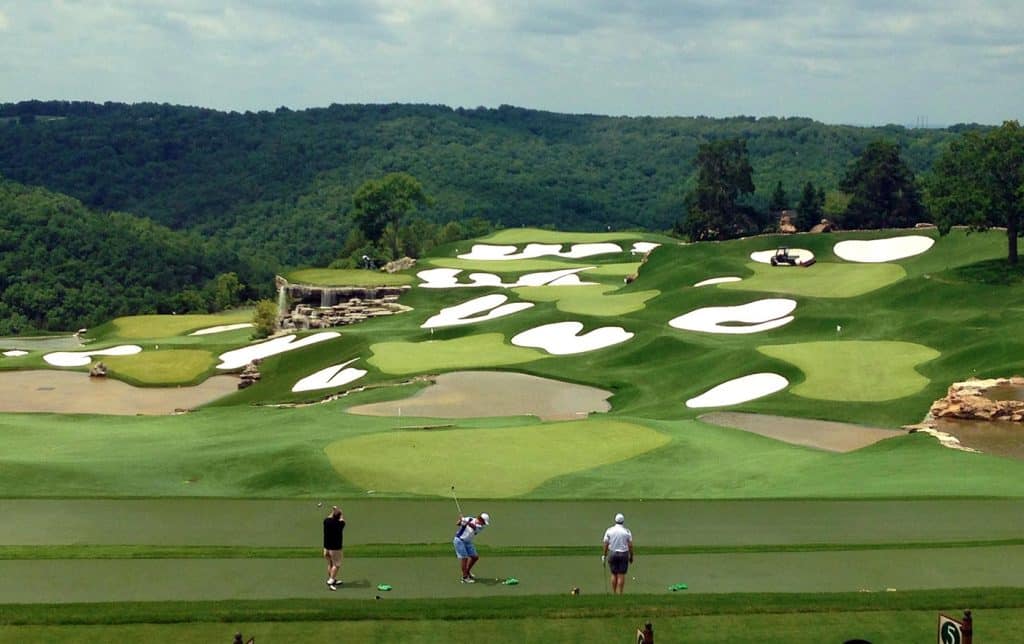Golf has long been known as a sport that demands precision and skill, played on immaculately manicured greens. However, the conventional methods of maintaining golf courses come with their considerable amount of challenges, such as significant water usage, extensive and labor-intensive maintenance requirements, and susceptibility to weather conditions. In recent years, there has been a radical shift in the industry with the introduction of artificial turf, and SW Greens has emerged as a leading provider in this realm. In this post, we’ll delve into the innovation behind artificial turf, exploring how it revolutionizes golf courses and why we are at the vanguard of this groundbreaking approach.
THE HISTORY OF ARTIFICIAL GRASS
Artificial turf technology has come a long way since its inception in the ‘60s. Early versions were not well-received for their unrealistic appearance and unsatisfactory performance. However, advancements in technology and materials have transformed artificial turf into a high-performing, beautiful alternative to natural grass. SW Greens has worked hard to develop cutting-edge products that closely mimic the look, feel, and playability of natural grass.
WHAT MAKES TODAY’S SYNTHETIC TURF BETTER?
One of the important aspects of SW Greens’ artificial turf that sets it apart from the competition is its composition. It’s made of a multi-layered system made to mimic the nuances of natural turf. The top layer, often called the infill, is a mixture of fine-grained materials such as sand, depending on the application. This layer provides stability, cushioning, and traction, enabling golfers to achieve consistent bounce, aim, and roll.
Unerneath the infill is a backing material that enhances durability, ensuring proper drainage. SW Greens’ proprietary backing technology is made to withstand heavy foot traffic and resist premature wear, making it ideal for golf courses that experience frequent use.

THE SCIENCE OF ARTIFICIAL TURF
The science that goes into SW Greens’ artificial turf goes far-past its composition. A critical aspect of its design is the integration of advanced fibers that resemble the properties of real grass blades. These fibers are precisely engineered to provide a realistic appearance and optimum playing conditions. They are often made from polyethylene, which offer wonderful durability and longevity. SW Greens relies on extensive research and development to guarantee that its artificial turf products deliver consistent performance, even under rigorous usage.
WHY ARTIFICIAL TURF INSTEAD OF NATURAL GRASS?
One of the primary advantages of synthetic grass over natural grass is its low maintenance requirements. Maintaining a conventional golf course can be a time-consuming and costly endeavor. Natural grass demands regular watering, mowing, regular fertilization, and pest control.
On the other hand, our artificial turf does away with the need for these tasks. It is built to withstand fluctuating weather conditions, including intense heat and heavy rainfall, without losing its structural integrity or playability. This resilience makes it a cost-effective and eco-friendly alternative for golf courses, as it needs minimal water usage and lessens the need for dangerous chemicals.
SW Greens’ artificial turf provides a level of consistency that is challenging to get with natural grass. Golfers often struggle with irregular playing surfaces, erratic ball rolls, and divots caused by players walking on the course. With artificial turf, these issues are alleviated, providing golfers with a dependable and predictable playing experience. The advanced infill systems used by SW Greens make sure that the ball rolls smoothly and consistently, letting players focus on their skills and strategy.
WHAT ABOUT THE ENVIRONMENTAL EFFECTS OF ARTIFICIAL GRASS?
Beyond its performance features, artificial turf can also add to environmental sustainability. Water scarcity is a serious issue in many regions, and golf courses are often criticized for their high water consumption. By migrating to artificial turf, golf course operators can substantially reduce their water usage, mitigating the strain on local water supplies.
The lack of chemical fertilizers and pesticides associated with traditional grass maintenance helps cut down on water pollution and soil contamination. Our company’s commitment to sustainability can be seen in its dedication to manufacturing environmentally friendly turf products that align with these principles.
THE DREAM TEAM OF SW GREENS
SW Greens’ expertise extends beyond the science of artificial turf. Our team of professionals, including installers, designers, and engineers, have a deep understanding of course layout and construction. They work closely together with golf course owners and operators to develop personalized solutions that meet their specific needs and requirements. Whether it’s developing a complex artificial putting surface or constructing an entire golf course, SW Greens combines scientific knowledge with real-world expertise to deliver excellent final products.
INVEST IN THE BEST
With minimal maintenance requirements, consistent playability, and sustainability, artificial grass for golf courses offers quite a few advantages over traditional grass. Our commitment to excellence and ability to create personalized solutions makes us an ideal partner for golf course owners and operators looking to welcome the future of golf course design and maintenance. Get in touch with us now for a free consultation!